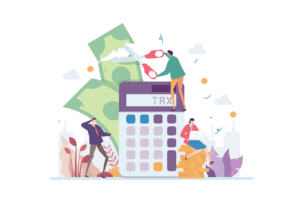Content

Many companies purchase inventory from vendors or suppliers on credit. Once the vendor provides the inventory, you typically have a certain amount of time to pay the invoice (e.g., 30 days).
There are also different types of liability insurance coverage you’ll need to consider when looking for a policy. Contingent liabilities – or potential risk – only affect the company depending on the outcome of a specific future event. For example, if a company is facing a lawsuit, they face a liability if the lawsuit is successful but not if the lawsuit fails. For accounting Types Of Liabilities purposes, a contingent liability is only recorded if a liability is probable and if the amount can be reasonably estimated. As a business owner, it’s likely that you already have some liabilities related to your company. A liability is anything that results in debt or is a potential risk, and it is used in key ratios to determine your organization’s financial health.
Examples
In general, a liability is an obligation between one party and another not yet completed or paid for. Current liabilities are usually considered short-term and non-current liabilities are long-term . A liability can be a monetary sum that a company will pay to another entity, or it may be paid in goods or services. Balancing assets and liabilities enables businesses to maintain healthy free cash flow and cover their operational expenses.
- Liabilities also arise if an amount is received for goods/services that are yet to be provided.
- In totality, total liabilities are always equal to the total assets.
- It can be real (e.g. a bill that needs to be paid) or potential (e.g. a possible lawsuit).
- Square Invoices is a free, all-in-one invoicing software that helps businesses request, track and manage their invoices, estimates and payments from one place.
- When this happens, you can reasonably estimate the amount of the resulting liability.
- Management should keep a close eye on short term liabilities to make sure the company has enough liquidity to meet the obligations of these liabilities within the shorter period of time.
This is why it’s important to understand what liabilities are since they play a critical role in your business. On a balance sheet, liabilities are listed according to the time when the obligation is due. The debt-to-equity (D/E) ratio indicates how much debt a company is using to finance its assets relative to the value of shareholders’ equity.
Find Out More About General Liability Insurance
Unearned revenue is a little different than the types of short term liabilities we’ve discussed so far because it is money that has been received in advance of goods or services. While the loan may be a 30 year loan, most loan payments, which include principle and interest, are due every 30 days, which makes them a short term liability. The only type of liabilities that many small businesses have on their balance sheet in the beginning are accounts payable. Short term liabilities are obligations that need to be paid within a years time, which is why they are called short-term or current liabilities. Short-term liabilities – short term liabilities are any debts that will be paid within a year. Any mortgage payable is recorded as a long-term liability, though the principal and interest due within the year is considered a current liability and is recorded as such. Accounts payable liability is probably the liability with which you’re most familiar.
Legal Experts’ Tips for Massage Therapists Different Types of Liability – Massage Magazine
Legal Experts’ Tips for Massage Therapists Different Types of Liability.
Posted: Mon, 12 Sep 2022 11:54:02 GMT [source]
Your company would take on a long-term liability to acquire immediate capital to purchase an office building or computer equipment, for example, or to invest in new capital projects. Some companies provide a breakdown of their current liabilities, while others lump it all together. Asset accounts usually have debit balances while liability accounts have credit balances. However, certain accounts known as ‘contra-liabilities’ accounts have debit balances. This explains the usage of the term ‘contra’ since their debit balance is ‘contrary’ to the usual credit balances of liability accounts.
What Are Current Liabilities?
When you owe money to lenders or vendors and don’t pay them right away, they will likely charge you interest. FundsNet requires Contributors, Writers and Authors to use Primary Sources to source and cite their work. These Sources include White Papers, Government Information & Data, Original Reporting and Interviews from Industry Experts. Reputable Publishers are also sourced and cited where appropriate. Learn more about the standards we follow in producing Accurate, Unbiased and Researched Content in our editorial policy. If your company wins the lawsuit or it is dropped, then no liability would arise.
It is categorized as current liabilities on the balance sheet and must be satisfied within an accounting period. A liability is an obligation payable by a business to either internal (e.g. owner) or an external party (e.g. lenders). There are mainly four types of liabilities in a business; current liabilities, non-current liabilities, contingent liabilities & capital. Non-current liabilities can also be referred to as long-term liabilities.
Type 2: Principle & interest payable
Promissory NotesA promissory note is defined as a debt instrument in which the issuer of the note promises to pay a specified amount to a party on a particular date. The below is a brief explanation of the most common liabilities that are found on a Company’s Balance Sheet.
You typically incur liabilities through regular business operations. If for some reason you have taxes that are not due within the next 12 months, they would be considered a long-term liability and would be allocated to a deferred taxes account. Some common examples of notes payable could be the purchase of a company car or a loan from a bank. Long-term liabilities – long term liabilities (also known as non-current liabilities) are any debts that will take more than a year to be paid. If you’re a very small business, chances are that the only liability that appears on your balance sheet is your accounts payable balance. Short-term liabilities are any debts that will be paid within a year.
Like most assets, liabilities are carried at cost, not market value, and undergenerally accepted accounting principle rules can be listed in order of preference as long as they are categorized. The AT&T example has a relatively high debt level under current liabilities. With smaller companies, https://wave-accounting.net/ other line items like accounts payable and various future liabilities likepayroll, taxes will be higher current debt obligations. Recorded on the right side of the balance sheet, liabilities include loans, accounts payable, mortgages, deferred revenues, bonds, warranties, and accrued expenses.

Workers’ comp can help cover the cost of his medical treatment and ongoing care. Pay the cost of medical care for employees that get hurt or sick from their job. Assets are items of value that your business owns, such as real estate and equipment. The following are answers to some of the most common questions investors ask about liabilities. FREE INVESTMENT BANKING COURSELearn the foundation of Investment banking, financial modeling, valuations and more. Company Issue BondsBonds refer to the debt instruments issued by governments or corporations to acquire investors’ funds for a certain period.

0 Comments